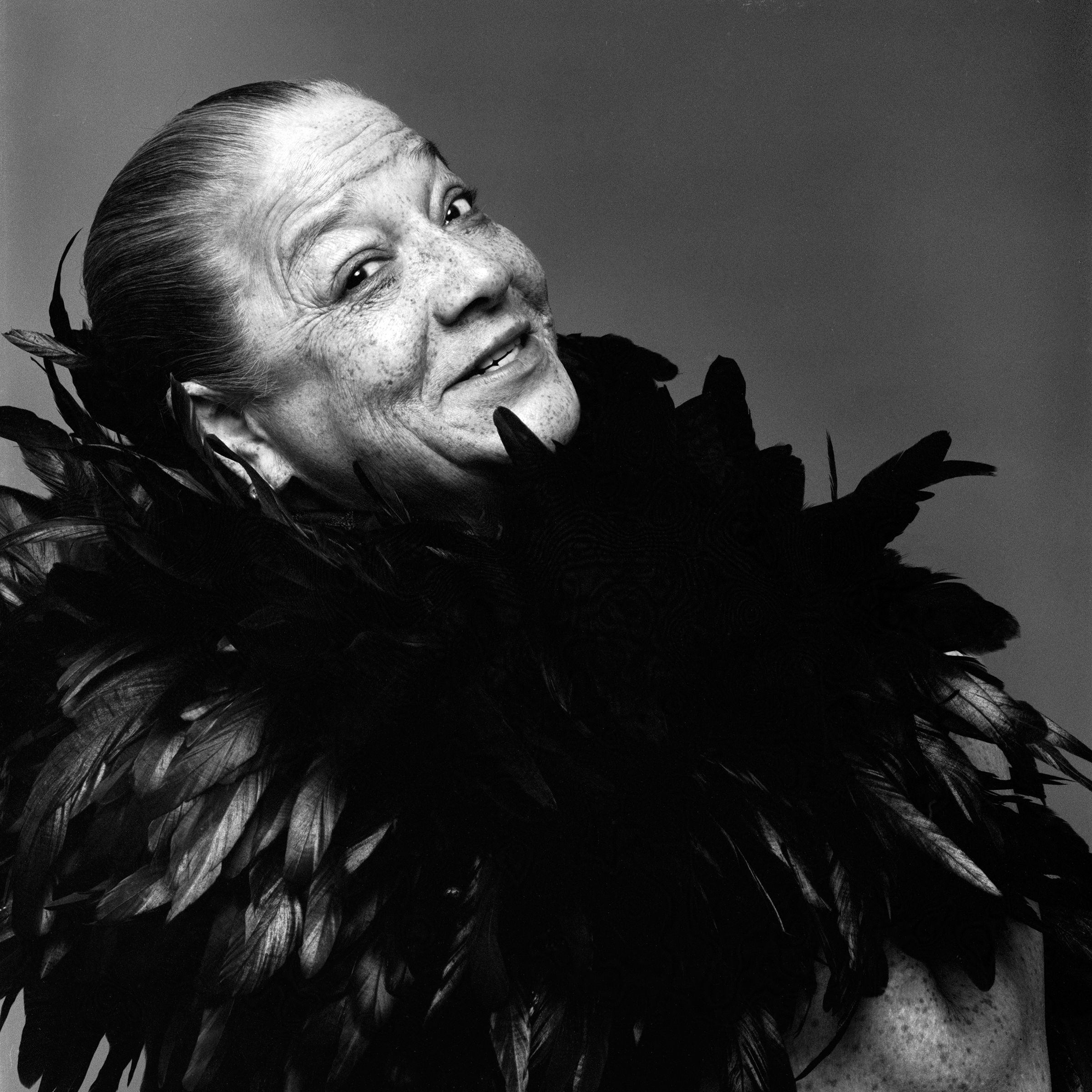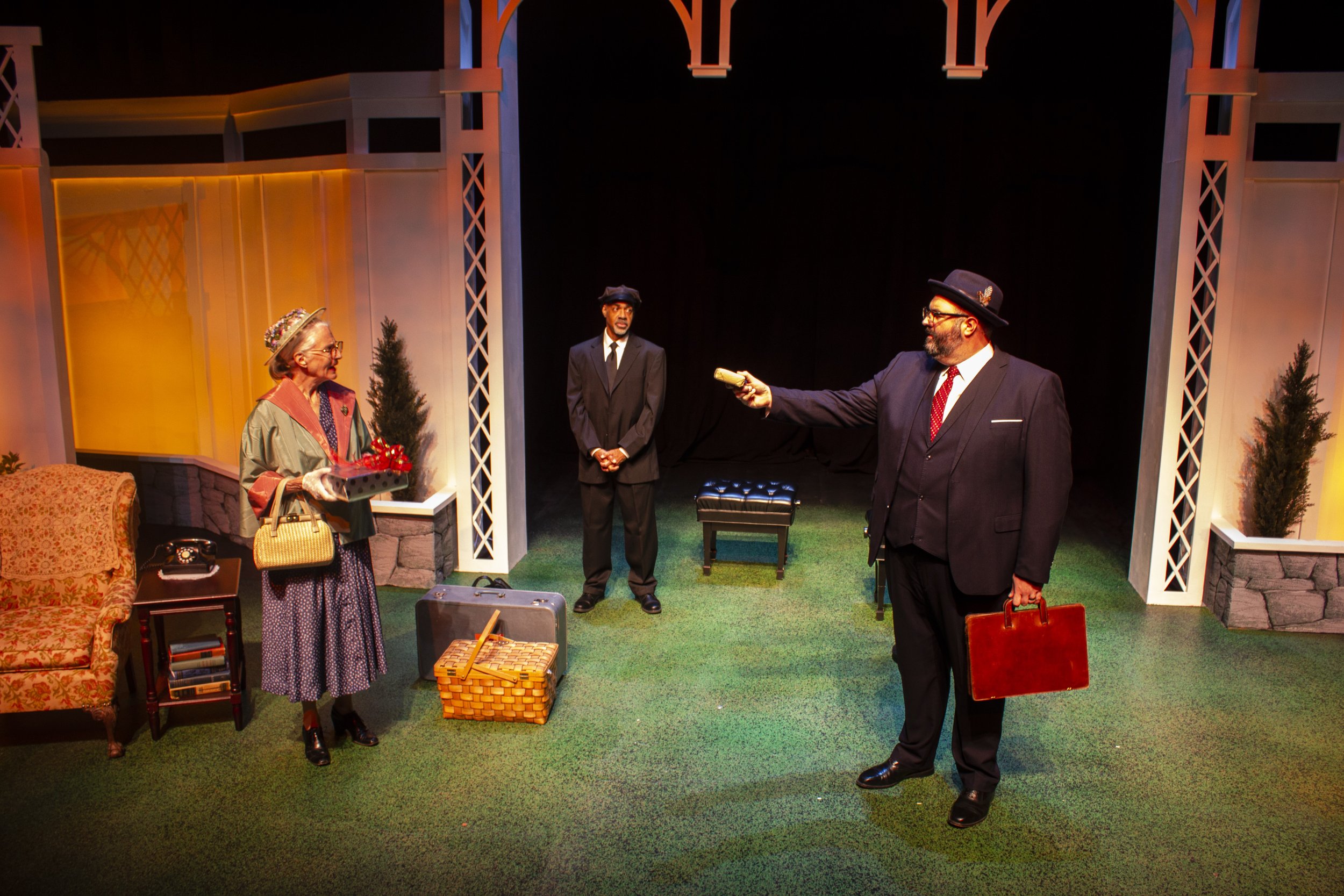Bricktop

BY JAKE MAYNARD
Photo courtesy of Jack Robinson Archive
Paris, France. 1926—Even though she’s just gone to bed, Ada Bricktop Smith is roused at dawn by her apartment doorman. Her friend Scott is at the door, the doorman says. She dresses and steps outside to find Scott on the sidewalk sopping wet, angry police officers flanking him on each side. After a long night of partying, he and his wife Zelda have just decided to take a dip in one of Paris’s most historic public fountains. Zelda, somehow, has escaped away but the police have apprehended Scott, an American. “You can’t lock me up,” he has told the officers, “I’m a friend of Madame Bricktop.”
Incredulous, the officers have brought Scott to Bricktop’s front door to confirm his big claim. They know where she lives because, well, most Parisians know all about Bricktop. She’s the first cabaret-singer in Paris and one of the city’s most beloved Americans.
“Do you know this man?” the policemen ask. She does. The officers leave it at that. Bricktop’s friends are above arrest for such petty reasons. Scott asks to come in for a drink. Bricktop declines, he’ll drip water on the carpet. Instead she sends the doorman for a bottle of champagne, and together the two friends share a drink in the early morning, Scott dripping fountain-water all across the sidewalk.
F. Scott Fitzgerald was already a famous author (and partier) by 1926, but in Paris, he just wasn’t Bricktop. Bricktop was a singer, a dancer, a saloon hostess and manager—an entertainer in the truest sense of the word. Throughout her career, spanning the early 1900s to the 1970s, she attracted generations of the world’s leading actors, artists, royalty, millionaires, and even high-profile gangsters. Relatively unknown today, Bricktop’s life story reads like Tender is the Night meets Forest Gump—full of jazz and glamour and chance meetings with the people whose names fill our history books.
Bricktop was born in August of 1894 in an apartment above a restaurant in tiny Alderson, West Virginia—the fourth child of Hattie E. and Thomas Smith. “My father had dark brown skin…” Bricktop writes in her autobiography, Bricktop by Bricktop, co-authored with James Haskins, “My mother was seven-eighths white. If she wanted to, she could have passed for white.” Despite her complexion, Hattie had been born into slavery—a product of America’s twisted and convoluted racial binary during the time—but she was just two-years-old at emancipation. Hattie’s mother had been a house servant. The father was most likely her owner/master, an Irish-American plantation owner in Virginia.
It was no surprise that Ada Smith was born light-skinned and freckled with a shock of brick-red hair on the top of her head. “I was the talk of the town,” she writes, “the first red-haired baby, Negro or white, born in that area in many a year.” Several members of the Alderson community wanted a hand in naming such an extraordinary-looking child. The local pharmacist even supposedly offered free soap to the family if they would name her Louise. As an act of accommodation, The Smiths simply folded several of the top requests together, naming the baby Ada Beatrice Queen Victoria Louise Virginia Smith.
At the time, Alderson was booming. The railroad had only recently come to town, enabling easy access to the outside world. There was an active timber industry—utilizing the Greenbrier River as a means of transporting timber to market—and local rock and limestone quarries employed several residents as well. Hattie cooked at a restaurant and raised the children. Bricktop’s father Thomas worked as a barber who served exclusively white patrons. (Most services were segregated at the time.) Thomas was purportedly well liked by people of all races in town and considered one of Alderson’s most stylish men.
Bricktop would never have the opportunity to get to know her father well, however. He died unexpectedly, possibly due to a heart attack, when she was just four years old. Hattie had no relations in Alderson. (It was unclear how the family arrived there; Bircktop may have known but she never mentions it in her memoir.) Without a husband and a means of financial support, Hattie decided to move her family to Chicago, where her brother, who lived publically as a white person, worked successfully for a railroad company.
They left when Bricktop was six, to the displeasure of the Alderson community. “When the townspeople heard that Mama was planning to pack up her children and head for Chicago, they were horrified.” Bricktop writes, “The attitude of small-town folk toward the big city hasn’t changed much in the past eighty years.” Hattie returned to Alderson often to tend the family burial plot and visit old friends. Although Bricktop’s travels would take her around the world, she would never return to Alderson.
Chicago in the early 1900s was a cultural hub as rich as New York. As a gateway to Midwestern farm and rangelands, as well as ties to the booming railroad industry, Chicago had money. The availability of jobs attracted poor African-Americans fleeing the post-reconstruction south, the majority of whom were just a generation removed from slavery. Many of the arrivals settled in Chicago’s integrated Southside neighborhoods, where Hattie Smith opened a boarding house that catered to working-class single men and vaudeville performers.
Among working-class Chicagoans of all races, vaudeville was hip. A syncretic mix of show tunes, early ragtime, comedy-songs (often with African-Americans as the butt of the joke), and theatrical productions, vaudeville offered an alternative to the haughty music scene of the late-Victorian era. Chicago’s black vaudeville arts scene centered on the Pekin Theatre, located just down the street from Bricktop’s childhood home. As a child Bricktop was exposed to vaudeville performers at home, as well as the theatre, where she would go with regularity to wait at the backdoor for a chance to meet the musicians.
After a few years of hanging around the Pekin on weekends, Bricktop was offered her first performing gig: a small backing role in a children’s chorus. Bricktop begged her mother to allow her the ten days off of school for rehearsal and her mother eventually consented. “I have an idea,” she writes, “that Mama suspected…that I was going to be an entertainer.” Hattie’s suspicions were confirmed two years later, when Bricktop was offered a spot on the traveling vaudeville circuit with the Miller and Lyles comedy team. She’d just turned sixteen—of legal age to leave school—and she was set on becoming a famous performer. Despite Hattie’s concerns, Bricktop left to tour the Midwest in 1912. The tour was a failure (Bricktop ended up stranded and broke several hours from home and had to call her mother begging for emergency money) but Bricktop would return to Chicago a few weeks later sure that she would spend her life as a performer.
More tours followed. Bricktop quickly learned that vaudeville touring was an unreliable and unpredictable way to make a living. Shows were often cancelled and entire touring groups disbanded without notice. Promoters were hard to work with; money vanished before it made it into the hands of the performers. So, after a few years of vaudeville touring, Bricktop gave it up to pursue saloon singing. She returned to Chicago—then home to over 10,000 saloons—and found work in a premier saloon. She made more than twice the money as vaudeville, and learned quickly that saloon singing was her forte.
The singer’s first brush with true celebrity came during those early Chicago years, when world-champion boxer Jack Johnson strolled into the saloon where Bricktop was performing and asked her to join his table. The champ was investing in a new club—a swanky barroom called Café Champ—and he wanted Bricktop to join his group of performers. Bricktop joined right away, writing that, “Jack Johnson has given Chicago something different—an elegantly furnished, racially integrated saloon. It was an overnight hit, and while its prices eliminated many Negroes and whites, those who could afford it enjoyed an atmosphere free of discrimination.”
Although Bricktop made a name for herself at Café Champ, it wasn’t to last. The club closed within a year, due in part to some romantic scandals involving Johnson, and Bricktop was back on the traveling saloon circuit. She would travel across North America over the next ten years, performing from New York City to Vancouver, gaining notoriety while she waited for her next big break.
Even though Bricktop never returned to Alderson, her family’s connection with the little town would play a significant, if tangential, role in her life. While playing a string of performances in Harlem in 1925, Bricktop learned that her mother would be traveling back to Alderson to visit friends and tend the family burial plot. Although Bricktop couldn’t make the journey to Alderson herself, they planned to rendezvous in Washington, D.C. Bricktop scheduled some performances in the area and she and her mother rented a room, planning to enjoy the city and each other’s company. It was in D.C. that Bricktop met Sammy Richardson, one of the premier African-American entertainers in Europe. He invited her to Paris, and with her mother’s blessing, she left on a steamer almost immediately. On her first day in Paris, weak with seasickness and exhaustion, she broke into tears upon seeing Le Grand Duc—the small, dingy saloon she’d traveled halfway around the world to sing in. A kindly black server fed her and helped her dry her tears. His name was Langston Hughes, an aspiring writer from the United States.
In Paris, as in Harlem, black culture was in vogue with the avant-garde crowd. Leopard-print was hip. Faux-tribal art lined Parisian mantles. As only the second female African-American performer in France, Bricktop was considered, by some, as a novelty. This is where her legacy can become uncomfortable for modern readers. Although most of her popularity can be attributed to her inimitable stage presence and charm, there is arguably an element of what many historians call “negrophilia” to Bricktop’s popularity. Even Bricktop herself notes that she wasn’t a great singer. She danced well, but not expertly. She played no instruments and composed no music of her own. Her formal education had ended in what is now middle school and she showed no special interest in the arts or literature. In her autobiography, Bricktop is quick to point out that, in Paris, she may have “benefitted from this great interest in Negro things” but she largely viewed the increased interest as an opportunity for herself and other black performers. And, regardless of whether “negrophilia” brought patrons into her clubs initially, the entertainment and atmosphere kept them coming back.
The first social group to frequent Le Grand Duc was the crowd from Montparnasse—a bohemian, expatriated area of the city populated with artists, writers, philosophers, et cetera. And according to Bricktop, F. Scott Fitzgerald was the locus of the expatriate art scene. He’d already acquired wealth and notoriety, and enjoyed the excesses made possible by both. “It was impossible not to like him,” writes Bricktop. “He was a little boy in a man’s body. He hadn’t grown up and he didn’t intend to, and I liked that… When Scott got drunk, he was never mean or malicious. He just got more playful. He’d deliberately do things to get people excited or annoyed, but not bad, bad things.”
Bricktop and the Fitzgerald family became fast friends, often seeing each other almost every night of the week. Other artists followed the Fitzgeralds to Le Grand Duc. “Hemingway was one of them,” she writes. “A lot of people were raving about him, but I never took to him … He just wanted to bring people down, and he had a way of doing it, and he was liable to punch you at the same time.” Pablo Picasso, then relatively unknown, frequented the club, along with John Steinbeck and the Dada artist Man Ray.
Le Grand Duc was often the last club in the city to close; between three and six in the morning, when other saloons shut down, night owls flocked to the club for drinks, music, and perhaps a bite to eat. During one of those early mornings in the early winter of 1925, a slight, immaculately dressed man strolled into Le Grand Duc and ordered corn beef hash and a bottle of wine. He listened intently while Bricktop performed her set of jazz and cabaret songs, including a song by Cole Porter, and when his food and drink were finished he stood sheepishly and left.
“Who was that?” Bricktop asked one her friends in the club.
“That was Cole Porter,” he told her. At the time, Porter was already one of the most renowned composers and songwriters of his generation. He merged jazz and orchestral music before Gershin and found success as one of the only composers to write both the lyrics and the music for his musicals. The only child of a wealthy family from Indiana, he moved freely between the cliques of European high society.
Porter reappeared a few days later with a proposition for Bricktop: he’d like her to come to one of his famously-extravagant parties and teach his guests a few popular Harlem dances like the Charleston and the Black Bottom. She agreed, and soon she was obliging requests to teach Harlem dances to multi-millionaire Amos Lawrence and even The Prince of Wales. Never one to miss a chance, Bricktop turned her newfound fame among the upper class into a business opportunity. She opened her own club in Paris, calling it Chez Bricktop, and staffed it with the finest musicians and waiters she could find in the city. It was an instant success. The Prince of Wales held parties there. European, American, and Argentine millionaires packed the tables during the tourist season. Cole Porter sometimes took to the stage in the early morning to practice new songs in front of the last stragglers at the bar. Duke Ellington visited the place during his first trip to Europe, as did Franklin Delano Roosevelt, Jr. Bricktop actually introduced the two and they became friends.
The golden era of Chez Bricktop wasn’t to last. The American stock market debacle of 1929 finally crept into France by the 1930s. F. Scott Fitzgerald had gone broke and returned to Hollywood to write scripts. Several of the European millionaires had lost their fortunes and turned to austerity. And in Germany, Hitler became increasingly defiant of international accords.
In 1936, Chez Bricktop closed its doors due to financial instability. Bricktop was, once again, a traveling cabaret singer. She found work, both in Paris and Cannes, and even teamed up with Django Reinhardt and Stephen Grappellie, but she would never again reclaim the glamour of Paris in the jazz age. As the 1940s drew close and the hope for peace in Europe diminished, Bricktop struggled to plan for her future: “I realized there was nowhere for me to go,” she writes. “I’d built my whole career, and lived a sizable part of my life in France. It had become my home. Retuning to America had no appeal for me.”
She did return stateside, though, in late 1939 with a steamship ticket secured for her by the Duchess of Windsor. Hers was one of the last ships to leave France before the German invasion.
The United States—unfamiliar with French-style entertainment and still a decade away from the civil rights movement—didn’t suit Bricktop. Neither did Mexico City, where she performed for six years in the late 1940s. In 1949 she left Mexico for New York with the intent of reentering to renew her work permit. But, in typical Bricktop-fashion, she instead opted for adventure and returned to Paris nearly thirty years after her first arrival to the city. Mexico City could have easily just been one of many cities where Bricktop entertained except for one vital event: while there she converted to Catholicism, a conversion that would guide much of her work for the rest of her life.
Bricktop did not find the Paris that she had known from the roaring jazz-age. The city had been devastated by war and culturally altered by the influence of occupation. First, by Hitler’s Germany. Then by the American military which was scandalized over allegations of rape and theft during the liberation of France. Paris was simultaneously resentful of the American occupation and quickly adopting American attitudes about race relations. Her return lasted less than a year.
At age fifty, she left for Rome, a city largely foreign to her. She again found success. The city was the capital of world’s burgeoning movie industry—everything from American-style westerns to ancient epics was filmed there—and it accordingly attracted celebrities looking for vibrant nightlife.
Much of Italy was still devastated from two generations of war, and the lingering social problems and poverty soon drew Bricktop’s attention. Using her club as a platform, she began collecting money for children in orphanages across the country. “After I converted to Catholicism,” she writes, “I became more aware of how necessary it was for those who had to help those who have not, and in Rome I became deeply involved in charity work. I had a box in the club, and if a customer had three drinks, the money from the third drink went to buy milk for the babies.” Coupled with the persistent hounding of her wealthy clientele for donations, she succeeded in raising thousands of dollars for orphaned children. For her efforts, her friends and patrons began calling her The Holy Hustler. Her charity work drew the attention of Martin Luther King. Jr., who stopped to visit her while traveling in Europe to receive the Nobel Peace Prize in 1964. “He was one of the most calm, collected, together persons I have ever met in my life.” She writes of their encounter.
She entertained for over a decade in Rome, but eventually, the slow toll of time began collecting on the singer. Her appearances became increasing sporadic and in 1964 she officially retired from her multifarious roles as cabaret singer, hostess, and manager in the nightclub industry. Of her retirement, The New York Daily News wrote, “BRICKTOP, QUEEN OF NIGHT CLUBS, ABDICATES. Singing, dancing, cigar-smoking Bricktop, who has reigned as American night club queen in Europe for 40 years, announced her abdication today.”
“I’m tired, honey,” she told reporter Reynolds Packard. “Tired of staying up until dawn every day.”
For the remainder of her life, the pull of entertainment would occasionally pull her back in front of the piano. In her retirement years, she would perform in London, Rome, Paris, and in New York, where she eventually settled to live out the last of her years. Even after suffering her first heart attack in 1975, she continued performing, even opening a Chez Bricktop in Beirut, Lebanon. By 1980 her health had diminished significantly, but not her spirit. No longer able to travel, she entertained frequently at her Manhattan apartment. She was careful to always keep the kitchen well stocked with wine and beer, though she no longer drank.
Bricktop passed away in her sleep in 1984, at age eighty-nine. According to her biographer, James Haskins, she spoke on the phone with several close friends just hours before her death. Of her passing, Albin Krebs of the New York Times wrote, “Her fame was as widespread as it was legendary,” adding that her nightclubs attracted, “royalty, writers and the fashionably riffraff.” While Bricktop has been immortalized by several of the greatest artists of her generation—Fitzgerald, Hemingway, Django Reinhardt, Cole Porter—she is perhaps best remembered by the great poet T.S. Eliot, who said of humble roots and success: “to her thorn she gave a rose.”




